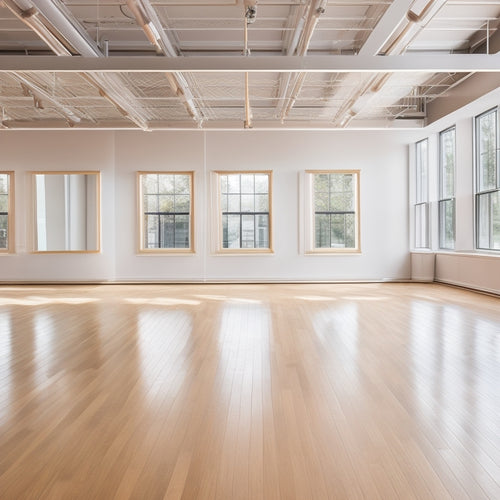
Enhance Your Dance Fitness: Exercise Balls for Dancers
Share
We at [company name] have extensive experience in the dance industry, including the installation and maintenance of dance studio floors. The choice of dance studio floor material is crucial to ensure the safety and well-being of dancers. In this article, we will discuss everything you need to know about dance studio floor material, including frequently asked questions and essential information.
Frequently Asked Questions about Dance Studio Floor Material
Q: What makes dance studio floor material different from regular flooring?
A: Dance studio floor material is specifically designed to provide the right amount of grip and resilience to protect dancers from injuries. Unlike regular flooring materials such as hardwood or carpeting, dance floors are constructed with specific materials that help prevent slips and falls.
Q: How do I know if my dance studio floor is safe for my dancers?
A: The safety of a dance studio floor can be evaluated by the flooring's level of grip, slip resistance, and shock absorption. If a floor is too slippery or too hard, it increases the risk of injury.
Q: What are some popular dance studio floor material options?
A: Popular dance studio floor materials include vinyl, Marley, and hardwood. Each material has its own unique characteristics, and the right choice depends on the specific needs of your studio.
Essential Information about Dance Studio Floor Material
Dance studio floors come in various materials depending on the needs of the dance studio. However, one factor remains a constant concern - safety. Below are some key points to consider when selecting dance studio floor material.
Grip and Resilience
A dance studio floor must provide adequate grip without being too sticky. Too much grip can cause splinters or shoe damage, while too little can cause falls and muscle strains. The floors must also provide enough resilience to reducing the impact of jumps and reduce the risk of impact injuries.
Softness and Shock Absorption
Dancers perform jumps that require a gradual weight transfer. Dance studio floors that are too stiff can cause injuries like shin splints and stress fractures. The floor must also provide adequate shock absorption to reduce the impact on joints and prevent injuries.
Maintenance
Regular maintenance is necessary to keep a dance studio floor in top condition. Failure to do so can cause injuries to dancers and damage the floors. Daily cleaning and a deep clean at least once a year are standard maintenance protocols.
In conclusion, choosing the right dance studio floor material is critical for the safety of dancers. The material should be specifically designed to provide the right amount of grip, resilience, and shock absorption. The most popular options include vinyl, Marley, and hardwood. Studios must regularly maintain the flooring to prevent damage and reduce injury risks. We hope this article provides valuable insights into the importance of dance studio floor material.
Related Posts
-

Market and Sell Digital Products as a Dance Artist
You're a dance artist with a wealth of knowledge and creativity, and now you want to turn that into digital products ...
-

Best Studio Mirrors for a Professional Dance Space
Choosing the best mirrors for your professional dance space can enhance your practice. High-quality glass mirrors pro...
-

Uncover the Artistry of Dot-to-Dot Dancing
Dot-to-dot dancing is an intriguing spectacle that converges logic and creativity, yielding a symphony of patterns. T...


